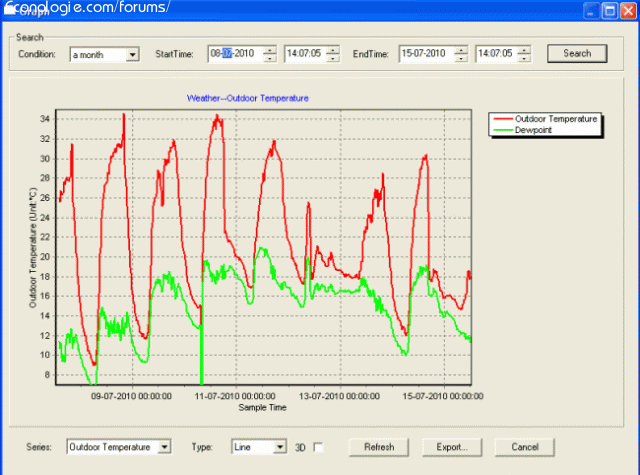
It allows to export the raw data under .txt or .xls, there are 4800 measurement points with an adjustable recording frequency, which allows to record 100 days in a row with the default setting (30 minutes ):


Here is where I am:
a) To start we recover the 2 official methods of calculation by Météo France:
https://www.econologie.info/share/partag ... Bt6P39.pdf
b) It is therefore necessary to recover the minimum and the maximum of each 24h to be able to calculate the "official" method.
But one could not, more realistically, average the inside and outside temperatures of the day and subtract them?
c) The official method does not take into account wind chill. A weather station with anemometer usually calculates it (Windchill in english), so is it wise or not to take into account this value rather than the outside temperature value?
So I will test for a few days (we just received the station so I have not enough records) the following 4 methods and see if it sticks or not:
a) official weather DJU
b) Official DJU pro energy (not on it is different from a) currently see definition)
c) Real DJU according to average method = average internal temperature - average outdoor temperature.
d) Actual corrected DJU = Average internal temperature - Mean windchill corrected average temperature
In my opinion, the most realistic method = d) but if the pro weather does not take into account the wind chill is that there must be a (good?) Reason right? Maloche must have his opinion!
Well it's not too time to calculate DJU but good (I will consider that they can be negative) ... but the method will be there for the winter!
ps: for those who have never heard the term DJU: http://fr.wikipedia.org/wiki/Degr%C3%A9 ... nifi%C3%A9




